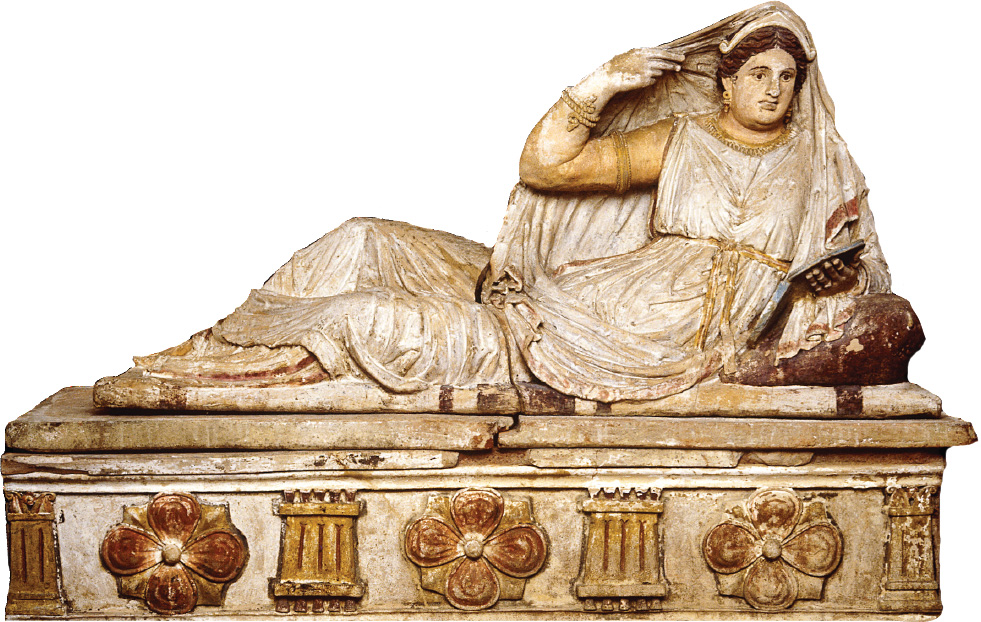A History of Western Society: Printed Page 125
A History of Western Society, Value Edition: Printed Page 127
The Etruscans

The culture that is now called Etruscan developed in north-central Italy about 800 B.C.E. Recent studies of DNA evidence have indicated that the Etruscans most likely originated in Turkey or elsewhere in the Near East, although when they migrated to Italy is not clear. The Etruscans spoke a language that was very different from Greek and Latin, although they adopted the Greek alphabet to write it. We know they wrote letters, records, and literary works, but once the Romans conquered them, knowledge of how to read and write Etruscan died out. Also, the writings themselves largely disappeared because many were written on linen books that did not survive; what remain are inscriptions on stone or engravings in metal. Modern scholars have learned to read Etruscan to some degree, but most of what we know about their civilization comes from archaeological evidence and from the writings of other peoples who lived around them at the same time.
The Etruscans established permanent settlements that evolved into cities resembling the Greek city-states, and they thereby built a rich cultural life, full of art and music, that became the foundation of civilization in much of Italy. The Etruscans spread their influence over the surrounding countryside, which they farmed and mined for its rich mineral resources. They traded natural products, especially iron, with their Greek neighbors to the south and with other peoples throughout the Mediterranean, including the Phoenicians, in exchange for a variety of goods.
Etruscan cities appear to have been organized in leagues, and beginning about 750 B.C.E. the Etruscans expanded southward into central Italy through military actions on land and sea and through the establishment of colony cities. Written records of battles all come from the side of the Etruscans’ opponents, but objects found in graves indicate that military values were important in their society, as wealthy men were buried with bronze armor and shields and iron weapons. In the process of expansion they encountered a small collection of villages subsequently called Rome.
